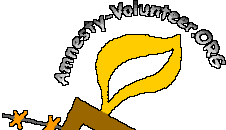
Home | Site Map | Internal | Public Resources | Hosted Groups
 |
Home | Site Map | Internal | Public Resources | Hosted Groups |

|
Amnesty International Campaign ManualAPPENDIX 4MOBILIZING THE IS FOR ACTION DURING CRISES
This appendix looks at how the International Secretariat (IS) responds when a human rights crisis emerges in the world and the organization decides to go into crisis response mode.
Mobilizing the IS
Regular work: At the time of writing there is a two-person permanent crisis response team based at the IS who are part of the Campaigning and Crisis Response Program. The team comprises a crisis response project manager and a crisis response campaign organizer. The team's job is to: N ensure the development of an international movement capacity to respond to crises; N undertake periodic evaluation of AI's crisis response to improve its effectiveness; N contribute to the development of policies in relation to crisis response; N facilitate the development of communication systems, membership structures and techniques to help mobilize effective action in response to crises.
Crisis mode: The decision from the Secretary General to go into crisis mode signals to everyone in the movement that they should consider how they will contribute to tackling the crisis. In the IS, the crisis response project manager immediately forms a crisis team for the affected country, made up of key IS staff and is responsible for the project management and smooth running of the team. The role of this IS crisis team is to: N contribute to the development of strategies and plans and to the decision-making within the crisis team; N undertake tasks agreed within the crisis team; N ensure fast communication and coordination with their own programs (and others as designated), follow implementation of tasks within their program and report back to the crisis team; N keep other relevant staff informed of the knock-on effects of their crisis tasks; N be the first point of contact for Sections (normally assigned to one member of the team _ the crisis response campaign organizer) and for media (normally the IS press officer responsible). Other crisis response team members might include one or more of the following as circumstances dictate: a logistics officer, an information officer, a language editor, someone from the relevant region's membership development team, a representative from the Research and Mandate Program. One Deputy Secretary General is responsible overall for the crisis project. The day-to-day management of the crisis team is performed by the crisis response project manager. Where necessary and possible, extra staff are deployed to the IS crisis team (this may include recruiting from Section staff, other non-governmental organizations, etc). For example, a Section campaign coordinator might come to the IS in the role of regional campaign coordinator, just working on the crisis team. This would enable the permanent regional campaign coordinator to remain in post dealing with the rest of their region. Sections' help in identifying people for crisis team work is invaluable; the more we can be prepared in advance for rapid deployment of extra resources the better.
What happens next? When crisis mode is declared the decision is also immediately communicated to the movement. Within the next 48 hours the IS has a checklist of things which need to be done, examples of which are: N hold a crisis team meeting to decide on immediate activities; N react immediately, perhaps with an Urgent Action and a media statement; N consider security and, if possible, organize deployment to the field; N approve initial budget, identify extra resources needed. Examples from the IS checklist with particular relevance to Sections are: N Consider the security of AI membership in country "x" and take appropriate measures, including consultation with the Section secretariat where possible. N Establish communications systems for IS staff and Section crisis response coordinators for sharing of ideas on how to address the crisis. N Consider specific tasks Sections can perform or help with. N Consult Sections on crisis strategy (either in writing, through a conference call or at a meeting). N Keep all Sections informed of key developments (at least weekly); this is normally communicated by fax to all Sections in the form of a weekly crisis response bulletin. N Select four or more key Sections for the crisis which would have particular input on strategy and support for the international effort.
Amnesty International Campaign Manual
|